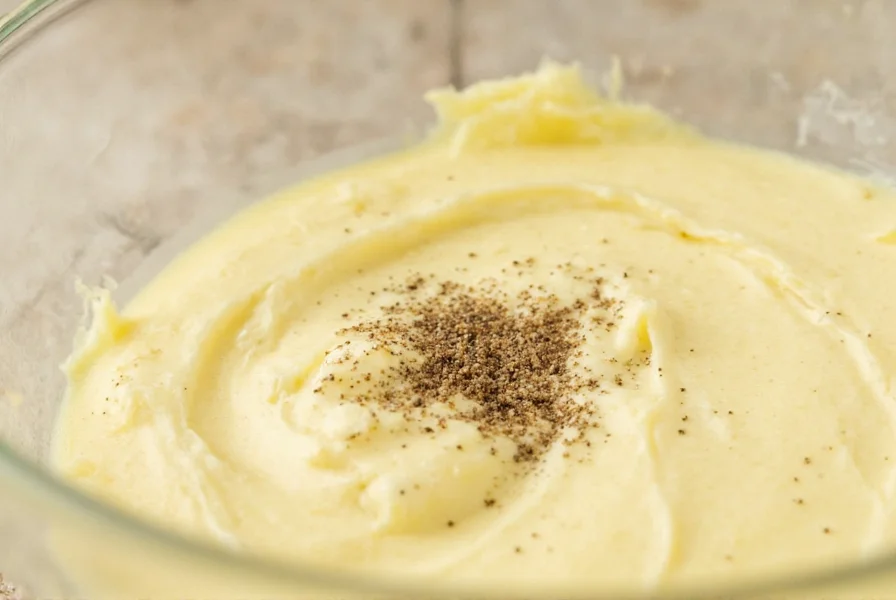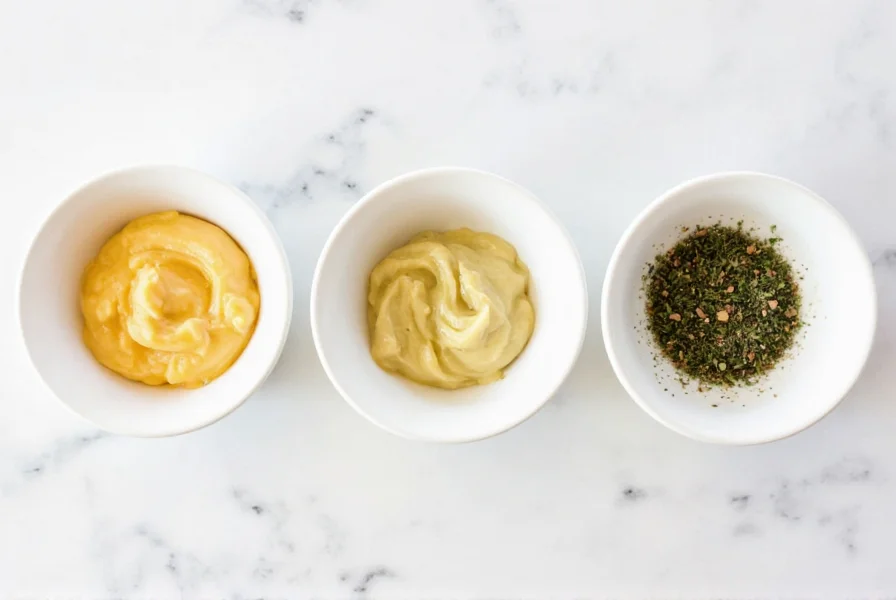Black pepper and mayonnaise create one of the most versatile flavor combinations in everyday cooking. This pairing works because piperine—the active compound in black pepper—cuts through mayonnaise's fatty richness while adding aromatic complexity. Professional chefs consistently use this duo as a foundation for sandwiches, dips, and dressings due to its ability to elevate simple ingredients without requiring specialty products.
The Science Behind the Flavor Pairing
Understanding why pepper and mayo work so well together requires examining their chemical interaction. Mayonnaise's high fat content (typically 70-80%) acts as a carrier for piperine, the compound responsible for black pepper's heat and aroma. When combined, the fat molecules in mayo encapsulate piperine, creating a sustained release of flavor that prevents the sharp bite of pepper from overwhelming the palate.
Food scientists note that the optimal temperature for this pairing is between 65-75°F (18-24°C), which explains why pepper-mayo combinations perform best at room temperature rather than chilled. This temperature range allows both ingredients to express their full flavor profiles without the numbing effect of cold on taste receptors.
| Pepper Type | Best For | Ratio to Mayo | Flavor Notes |
|---|---|---|---|
| Freshly ground black | Sandwiches, burgers | 1 tsp per 8 tbsp | Sharp, warm, complex |
| White pepper | Creamy sauces, light dishes | ¾ tsp per 8 tbsp | Milder, earthy |
| Coarse cracked | Dips, spreads | 1½ tsp per 8 tbsp | Textural, bold |
Perfect Applications for Pepper-Mayo Combinations
While the classic use is as a sandwich spread—particularly with chicken, turkey, or roast beef—this combination shines in multiple culinary applications. For the best black pepper mayonnaise sandwich spread, always mix freshly ground pepper into room-temperature mayo rather than adding it directly to your sandwich.
Professional kitchens frequently use this pairing as the base for signature sauces. A simple pepper mayo dip recipe requires just mayonnaise, freshly cracked pepper, a squeeze of lemon juice, and a pinch of garlic powder. This versatile dip works equally well with vegetable crudités, fried foods, or as a sandwich spread.

Mastering the Technique
The key to perfect pepper-mayo integration lies in technique. Always start with high-quality mayonnaise—either homemade or a premium store-bought version without artificial preservatives. For the best results when mixing pepper with mayo, follow these professional guidelines:
- Use freshly ground pepper from whole peppercorns (pre-ground pepper loses 60% of its volatile compounds within 15 minutes)
- Mix ingredients thoroughly but gently to avoid breaking the emulsion
- Allow the mixture to rest for 15-20 minutes before serving to let flavors meld
- Store in an airtight container for no longer than 3 days (pepper continues to release compounds that can alter texture)
Many home cooks make the mistake of adding too much pepper too quickly. The ideal ratio for most applications is 1 teaspoon of freshly ground black pepper per 8 tablespoons of mayonnaise. This creates a noticeable pepper presence without overwhelming the creamy base—a perfect balance for what many consider the ultimate simple pepper mayonnaise condiment.
Advanced Culinary Variations
Chefs often build upon this basic pairing to create signature sauces. For a restaurant-quality pepper mayonnaise dressing, try these professional variations:
- Lemon-Pepper Mayo: Add 1 teaspoon lemon zest and ½ teaspoon lemon juice per cup of pepper-mayo for brightness
- Smoked Pepper Mayo: Substitute ¼ of the black pepper with smoked peppercorns for depth
- Herb-Infused Pepper Mayo: Mix in 1 tablespoon of finely chopped fresh herbs like chives or dill

Common Mistakes to Avoid
Even this simple combination has pitfalls. The most frequent error is using pre-ground pepper, which lacks the aromatic compounds of freshly ground. Another common issue is adding pepper to cold mayo straight from the refrigerator—this prevents proper flavor integration. Always bring mayo to room temperature before mixing.
Many people wonder why pepper and mayo taste good together beyond just "it just works." The answer lies in sensory science: pepper's pungency cuts through fat, cleansing the palate between bites and creating a cycle of flavor renewal that prevents richness fatigue. This makes pepper-mayo combinations particularly effective with fatty proteins like salmon or pork.
Storage and Shelf Life Considerations
Pepper-mayo mixtures have a shorter shelf life than plain mayonnaise due to the enzymatic activity from freshly ground pepper. Store in an airtight container in the refrigerator for no longer than 3 days. The continued release of compounds from the pepper can eventually break the emulsion, causing separation. If your mixture separates, try whisking in one teaspoon of cold water to re-emulsify.











 浙公网安备
33010002000092号
浙公网安备
33010002000092号 浙B2-20120091-4
浙B2-20120091-4